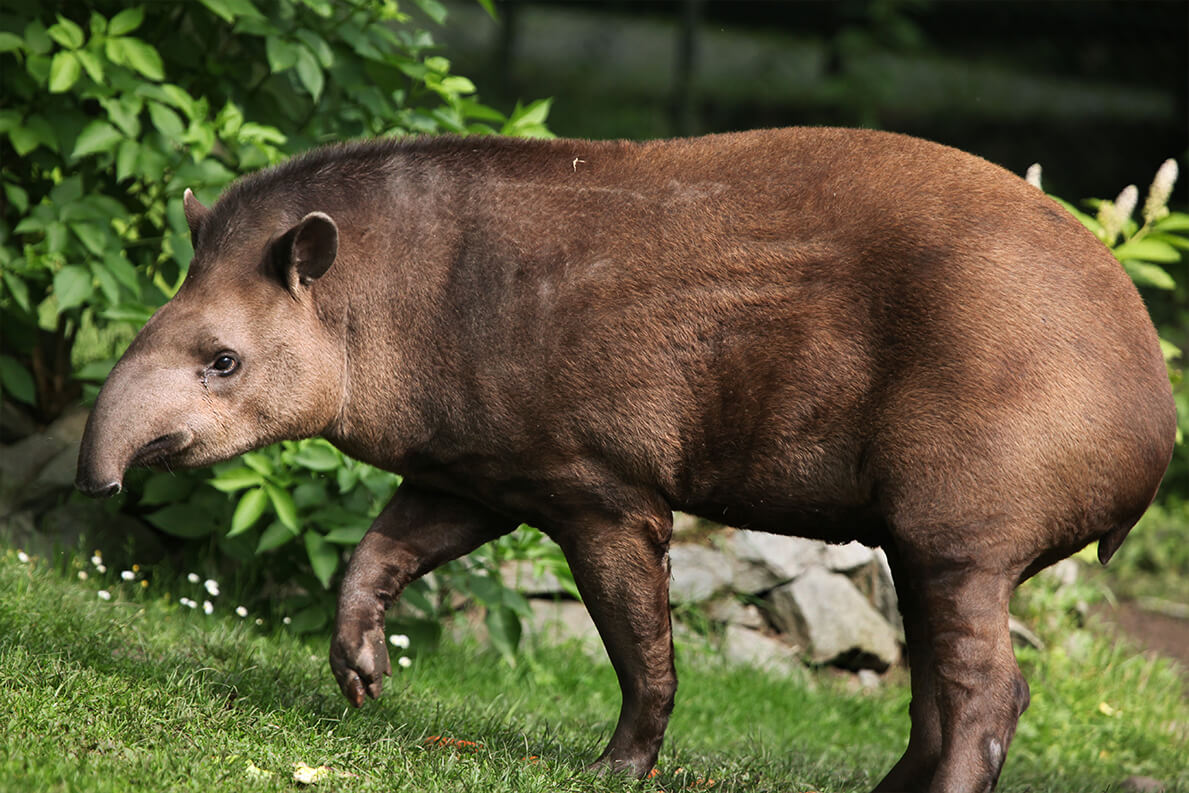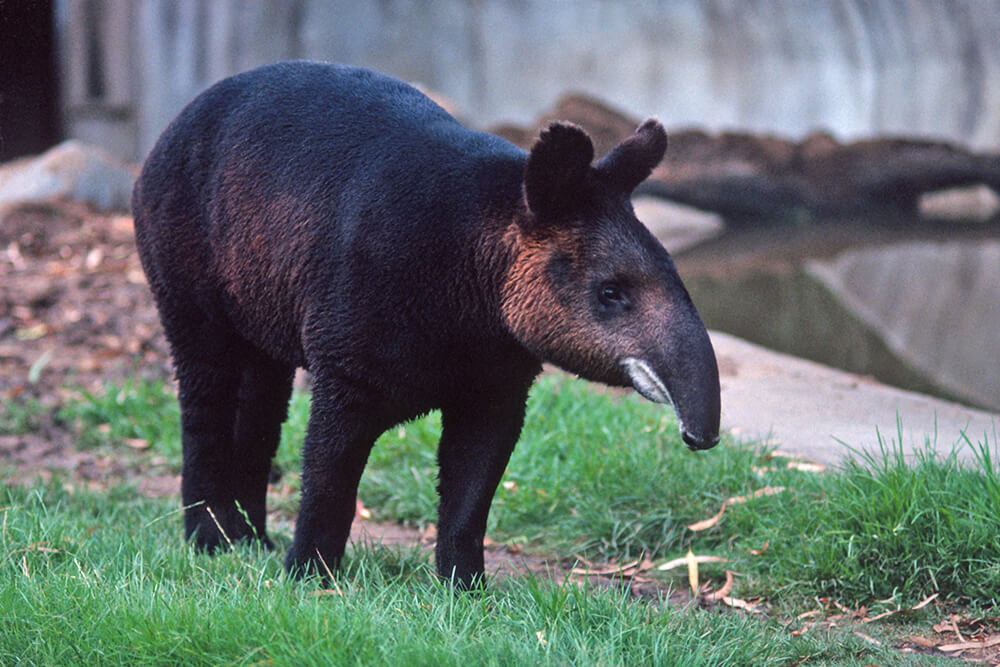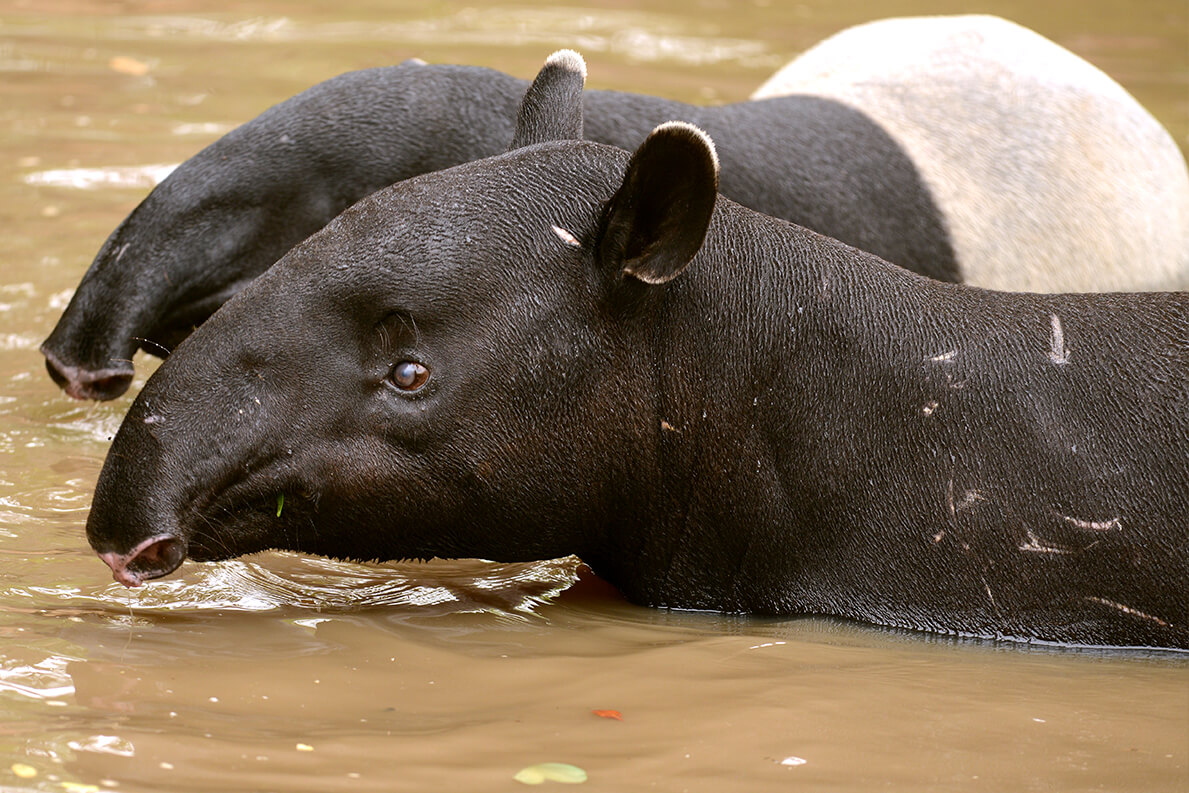Pog Like Animal With an Anteater Nose
Pog Like Animal With an Anteater Nose
Zoo visitors often inquire, "What is it? A squealer? An anteater?" No, information technology's a tapir, a primitive creature that has remained largely unchanged for millions of years. The iv types of tapir are almost closely related to horses and rhinos, since they accept an odd number of toes (iv toes on each front end foot, three on each dorsum foot). Their eyes and ears are small, and the body is teardrop shaped: tapered in the front and wider at the rear, designed to walk through thick vegetation. Male tapirs are slightly smaller than females.
The tapir'southward nose and upper lip combine into a flexible snout like an elephant's trunk. It can be used as a snorkel when the tapir is underwater and as an effective tool to observe odors wafting through the dense forest. This prehensile mini-torso (by elephant standards!) is used to grab branches and strip off the leaves or to assist pluck fruit and put it direct in the tapir'south mouth. Information technology also adds an air of mystery to the tapir—at get-go glance, it's hard to tell merely what this creature is!
As key wild animals in shaping and maintaining the biological multifariousness of tropical forests, tapirs are vital components in their ecosystems. They are masters at dispersing seeds and leaving them well fertilized, providing themselves and other wildlife with an ongoing supply of nutrient and shelter. A recent study of lowland tapirs in Peru revealed 122 different seeds in their dung!
Tapirs are important recyclers of nutrients, helping the soil and mural thrive. They as well serve as biological indicators of the health and vitality of an surface area: tapirs are the offset to reject when there is homo disturbance because of their large size, boring reproductive charge per unit, and sensitivity to their environs. In that location are v types of tapirs:

Baird'due south or Central American tapirTapirus bairdii:Native to Mexico and Central America, its coat is night red-brown to blackness as an adult, with a white breast and chin and white ear fringes.

Lowland or Brazilian tapirTapirus terrestris: Native to South America from Colombia to Paraguay and Brazil, its coat is dark on the back and lighter on the underside. It prefers living where it's warm, rainy, and humid. Crocodilians too as jaguars are its natural predators.

Mountain or woollyTapirus pinchaque: Living in the Andes Mountains of northern South America, it has a longer, thick glaze and undercoat to keep warm in its cold mountain home. It is i of the nearly endangered mammals in the world.

Malayan tapirTapirus indicus: The merely tapir from Asia, it is found in Thailand, Burma, Malaysia, and Republic of indonesia. It has a distinctive glaze design: black in the front and white in the dorsum. This acts as cover-up by breaking up the body outline in the shade of the forest. Tigers are its main natural predators.
Kabomani tapirTapirus kabomani: The "newest" of the tapirs, its "discovery" was announced to the world by scientists in 2013, although the local people knew of its existence for many years. The Kabomani tapir is the smallest of the five types and is named for the word for tapir in a local linguistic communication. This tapir lives in forests and grasslands of the Southwest Amazon region. Withal, this type of tapir was institute not to exist genetically or morphologically distinct by follow-up studies, so for the time being, scientists are by and large in agreement that in that location are, in fact, four different tapir species, and that T. kabomani is not a distinct species.
Pog Like Animal With an Anteater Nose
Source: https://animals.sandiegozoo.org/animals/tapir


Comments
Post a Comment